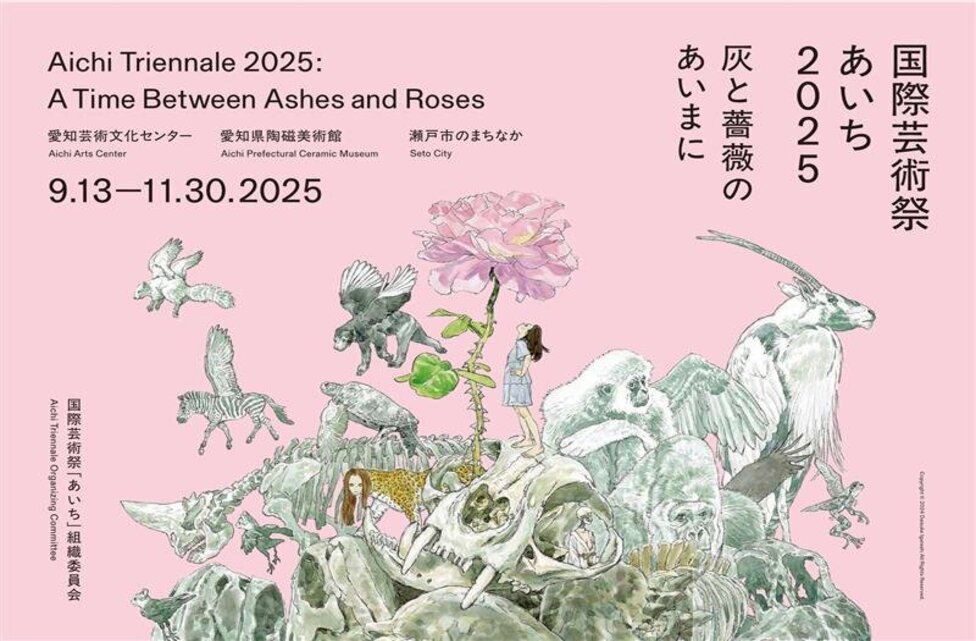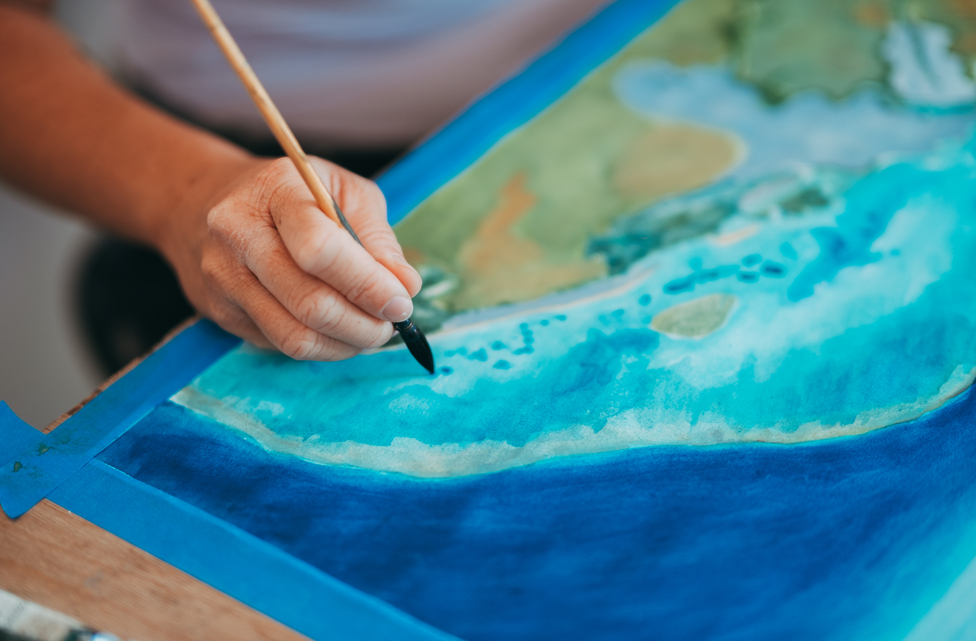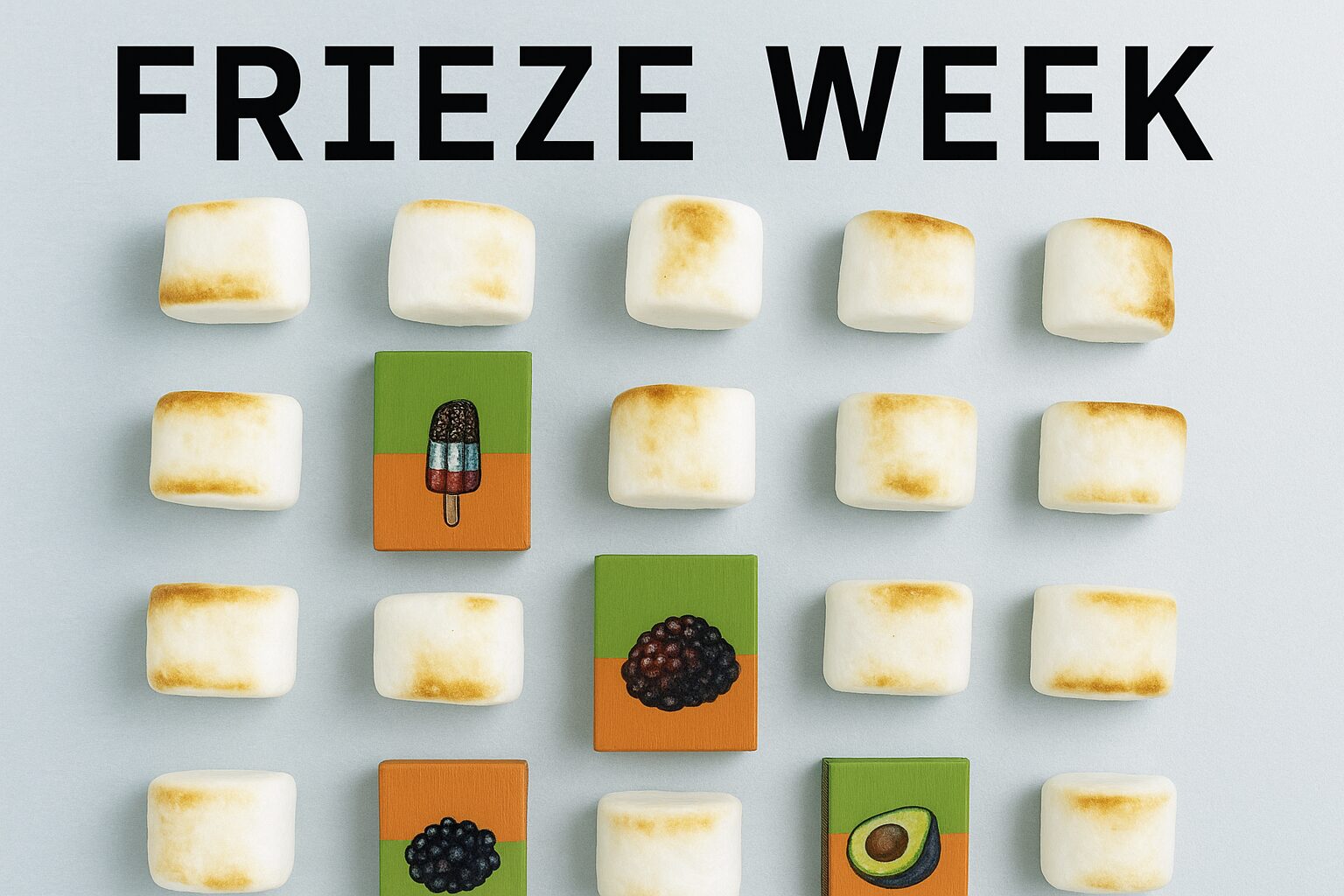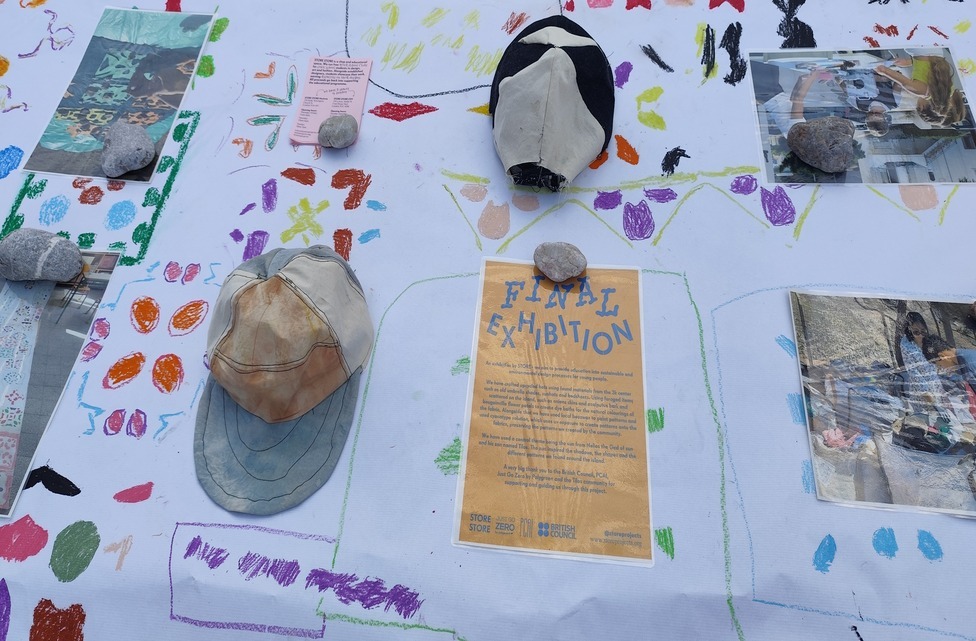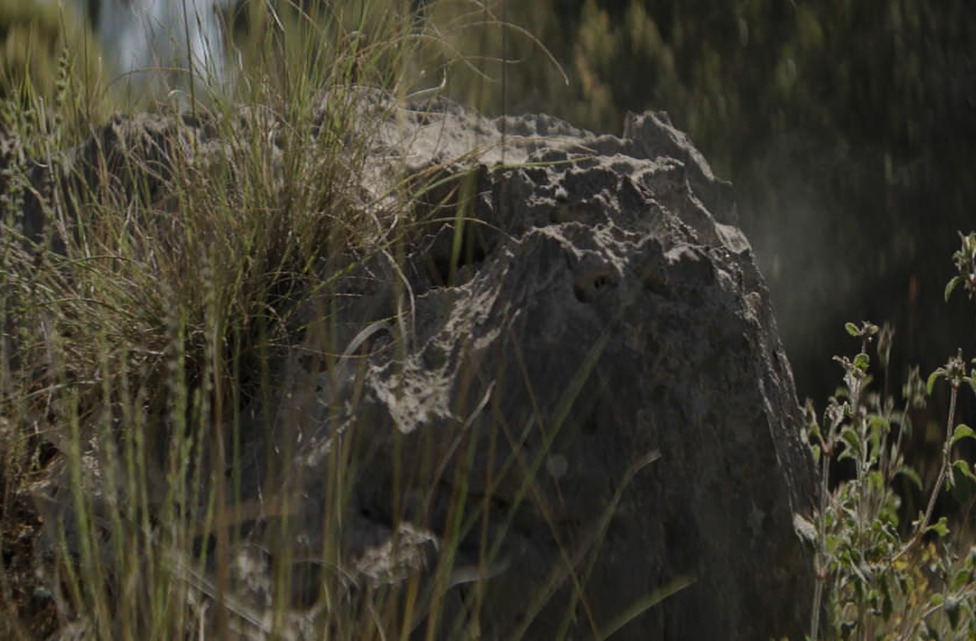ARTIST TALKS is a PCAI online series of talks and interviews between PCAI Collection artists and other artists, art historians, curators, or art theorists. For the fourth ARTIST TALK, visual artist Manolis Daskalakis Lemos talks with curator Evita Tsokanta about his artistic practice and recent projects.

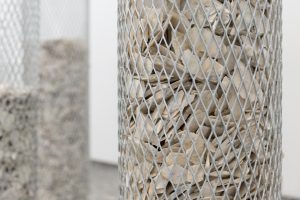
Manolis D. Lemos, Feelings (Columns), 2019, galvanized steel, marble, dimensions variable, Courtesy of CAN Christina Androulidaki gallery and the artist,Photo:Athanasios Gatos
“In dreams begins responsibility.”
-W.B. Yeats
The acknowledgement and quiet acceptance of recent major social, financial, and political shifts has forced us all to face global issues as matters of urgency. A reevaluation and redefinition of the notion of personal accountability has been inevitable and one might argue, long overdue. Confronting potentially irreparable damage and accessing the role one played in a problem’s exacerbation is not an easy task. It is precisely this ethical confrontation that lays in the core of Manolis D. Lemos’ artistic practice. However, rather than dwelling in the downward spiral of blame distribution and responsibility assumption, Lemos suggests a deliverance from it, accepting that in today’s complex issues, the villain is rarely singular. The work of Manolis D. Lemos, is a process that emphasizes a togetherness in which roles and functions are not only questioned, but quite simply overturn in pursuit of an imaginary that both alleviates and revels in possibility.
Evita Tsokanta: I would say that it is not explicit in your work that you deal with the topic of the environmental crisis. However, nature or one of its elements is always present in one way or another, even if only as a reference to a natural resource. I read somewhere that you are particularly interested in the narratives that materials carry on their own.
Manolis D. Lemos: Yes, that’s true. The artworks that include the use of oil or marble come to mind. The images I either make or make use of, whether in videos or prints, are characterized by a timeless nature because I like the elements that cannot easily be positioned in time. Whether that may be a beach, a set of rock formations, or the material of oil. All these materials carry a narrative in their own right. The broken pieces of marble that I scanned were sourced from the Athens riots, the oil presented in my installations is directly connected to geology, human history, particularly after the 20th century and today’s use of it. It references its’ relation to earth. I also have a personal connection to oil, which is the main reason I use it. Oil was part of my father’s job and as a child I often visited the oil refineries and developed a personal connection to it. It’s almost a game to me, to start from something personal and attempt to tell a universal story.

Manolis D. Lemos, Silent Hysteria II, 2016, petroleum and water in iron tanks, dimensions variable,
PCAI Collection
Another aspect of my process worth mentioning is a type of methodology I have created and used in the past few bodies of work in collaboration with my cousin, Constantinos Daskalakis who works at MIT’s Electrical Engineering and Computer Science department and is a member of the MIT Computer Science and Artificial Intelligence Laboratory. It is a tool of algorithmic artificial intelligence and machine learning, a method that is important to me because of its political undertones apart from its’ possible use as a poetic expressive instrument which is helpful in multiple ways. The tool supplies me with materials, which I then use in various ways and in different media, images, UV prints mounted on canvas onto which I paint either in drawings or in text. But even the methodology is quite open. Some of the results I draw are the originals from which I begin, others are the AI output that is provided to me. I present them all as a single output, without differentiating between them and the process from which they occurred. The process itself is very important to me because it is based on collaboration. My practice anyway includes many collaborative extensions. I always enjoyed a collaborative cycle as a production process.
ET: It sounds like you treat this tool like the way you use more traditional materials, a medium which carries its’ own story into the artwork. Here it connotes how crucial collaboration is in your work.
MDL: These are all elements I deeply believe in. This method, apart from the implication of cooperation which in this case I share with technology, also touches upon a hybrid approach to authorship which is fundamental. Along with the political, namely capitalistic, narrative that my materials hold, they lead to an optimistic, emotional, almost poetic new expression that I find more open.
ET: Open to interpretation as well? In terms of what the viewer draws from it?
MDL: Yes, I try not to be too definite or specific. Not in any pretentious way but because that is the way in which I function. These blurred lines of thought and the openness I propose are the ways in which I think and act and ultimately, the way I exist, within all these different media and narrative elements. I too am a person of many contradictions just like anyone else, so I want to be forthright about it. On an aesthetic level, my hybrid practice, or even the way I see things, has largely led me to search for and use images that are not easily definable. The same goes in the drawings and images I select from the material that we create through the AI tool. To be clear, I act as an editor, and it seems that these are the images I instinctively gravitate towards and that I think better express what is in my mind. They happen to always be images that cannot be precisely defined. They carry the energy and the emotional capacity that I want but upon looking at them, you can’t exactly determine what you see.


Manolis D. Lemos, drawings from the dataset training inputs and outputs, courtesy the artist and CAN Christina Androulidaki gallery
ET: Another element that seems to me to be pervasive in your work, once again not explicitly but not necessarily disguised either, is the topic of responsibility, accountability. Within the framework of climate change, accountability seems to constantly oscillate between the individual and collective, not unlike what you mentioned as your intention: to make something personal, universal. I connect this to the notion of reflection, also prevalent in your work; with which I mean the process of looking back, examining what has expired and recognizing one’s role in it in order to accordingly assume a behavior for the future. In the text of the artist book Spurt, I singled out the following phrase: “nature doesn’t care about good or bad and at the end of the day it’s not your fault”.
MDL: Yes, it’s a message, like a sign.
ET: It is also connected to the issue of responsibility and how it is negotiated, suggesting an inner struggle.
MDL: The topic of responsibility is central in this book. It is once again related to the AI cooperative system. There is a blurriness in the way in which we face the world around us and a matter that arises – and one that I am personally invested in- is what happens when responsibility cannot be clearly attributed. What transpires when accountability becomes a complex, formless matter. And precisely because you cannot give form to it, you cannot react to it either. It creates an emotional numbness.
The phrase you mentioned is the protagonist’s inner monologue and acts like the comforting stage of that emotional numbness, where nothing matters. The way you face the situation involves a certain level of nihilism. Similarly, in contemporary capitalism, you cannot prescribe blame to anyone in specific. Same as in the environmental crisis, you cannot exactly determine who the bad guy is. However, you must react severely to overthrow it. How does one find the necessary amount of energy to react when one is trapped in this blurry state of uncertainty created by the system itself?
It is equivalent to AI and the discourse surrounding man’s relation to technology. My cousin for example, with whom I’ve been collaborating, is participating in a legal committee to create AI related legislation and to determine a legal basis that ultimately protects man and nature.
Let’s imagine, for arguments sake, a car accident involving a self-driving car. The initial liability for this incident needs to be determined. There are those who designed the car, those who programmed it, those in charge of coding, the representatives of the car’s manufacture, the driver, there are many agents of responsibility in this case. And this problem could be traced in everything and anything, capitalism or the human condition in its’ entirety. Or even on a personal level. It is a matter that troubles me and I attempted to express it in this book. The issue of a person’s traumas, or the trauma induced by one individual to another, or even a crime: how do you define accountability? From what age onwards can one be ascribed responsibility?

Manolis D. Lemos, SPURT, 64pages hardcover, silverprint book with Corian pedestal, 30 x 30 x 82cm, Courtesy of CAN Christina Androulidaki gallery, Athens and the artist, photo by A. Gatos
ET: Or when it comes to generational trauma, from which point in the line of descent can we ascribe responsibility?
MDL: How far back should we go into generations? Do we carry the responsibility of generations that preceded us? All these matters create the uncertainty I mentioned. I am trying to reverse it, or better yet, to restore this energy that is lost while in this blurred state.
ET: The angst of assuming one’s fair share of responsibility, leads one to retrospectively examine and evaluate the past. Within that process, oftentimes taking on responsibility is confused with comprehending or justifying. However, they are quite distinct.
MDL: And it’s also quite different to understand something and quite different to justify it. And mustering up the energy to react as you should to a situation becomes even more difficult. It is something that has largely penetrated my modus operandi as well, in the way I was raised in my family. It is important to determine and clearly define what you must do, independently from what you understand as a cause. The concepts of right and wrong, of good and bad become clouded and must be clearly defined in order for the energy for a future, positive motion to manifest. I think it’s essential that these fundamental values are defined. But it is certain that the problem is often systemic. I mean the evil, let’s say, to which you can ascribe an entire system is systemic. Thus, I attempted to vaguely suggest another systemic operation that carries its’ own narration. And even its own political hue. However, the bottom line is that it is a tool, a poetic tool that encapsulates a narration and a proposal for its’ organization.
ET: Is it fair to say that the notion of catharsis is central to your work? Particularly juxtaposed to the idea of pollution. The destruction of the natural world, the assumption of responsibility can be potentially followed by the human catharsis. Through videos, sound or even text, it seems that you lead to a point of calmness that seems to act cathartically, like a type of purification, perhaps even acquittal.
MDL: You are acquitted from this pragmatism or the emotional numbness, or better yet, you move on to another stage that follows and goes beyond. Perhaps even leads to freedom. That is true. The element of pollution, I am also just now considering it, or the notion of capitalistic pragmatism that is the opposite of idealism and utopia is related to the way in which man treats earth and the environment. Let’s call these the three variations of the same situation. In the way I think of it, the ceaseless rapid bursts of imagery and experiences that lead to the emotional blocking which does not allow you to either react to the bad or to celebrate the good. It creates a convenient, ecumenical situation that lingers, and I feel it is becoming more and more intense. But one that can be reversed. In both the landscape works as well as the oil works, or the artist book Spurt, there is a reversal of this situation that occurs from the intensity that releases this energy and takes us back to a dreamy, childlike state.

Manolis D. Lemos, Tomorrow’s Corporate Love (Forgetting from Athens), 2017, water in iron tank, soil, lavender essential oil, dimensions variable, installation view at Palais de Tokyo, Paris, courtesy the artist
ET: A purified state.
MDL: And one that is emotionally free. My works with the oil were driven by a set of letters that my grandfather had written to my mother. He was a special individual. In those letters they discussed idealism. Although coming from a wealthy family, my grandfather was a communist insurgent, the black sheep of the family. He was then exiled to Tashkent, in Uzbekistan. Several years later, he abandoned the struggle for his vision. He was estranged from my mother and through these letters he admitted to her that his dream had failed and that it was time to become a realist and get back to business. Finally, he returned to Greece and entered the world of trade, in diamonds, fur and shipping. That shift that induced a resignation that led to an emotional blocking of childhood dreams and idealism, seems to me to be becoming more and more normalized. Therefore, the emotional numbness and return to pragmatism and their consequences on how we treat the world around us, are all present in my artworks. Along with the moments in which all this is toppled.
ET: If we have managed to reach the conclusion that one’s origin is not one’s responsibility, I’d like to move on to the idea of synergy, either through AI mechanisms or through participating in collectives, as one of your basic tools. I wonder if this need for a collaborative approach softens the sense of responsibility through sharing it.
MDL: Yes, a collective responsibility is created. But it isn’t only that. A collective “I” is ultimately created. The meaning of “I” is broken down, extended and the larger, more expanded mechanism that is created produces a result that is equally important, if not more important, than the closed definition of “I”. Yes, collaboration has that reasoning behind it.
ET: And since you mentioned the collective “I”, that brings me to the increasingly ubiquitous discussion surrounding the ways in which contemporary art deals with environmental issues. There is a sense of urgency, particularly following the pandemic years, that the art world engages with the pressing matter of climate change. And following that, the worry that on one hand the topic does not eventually dissolve into yet another trend within a long line of discourse topics that appear to succeed in visual arts and on the other that the approach does not ignore the part the art world has played in the exacerbation of the problem. Or even the world of fashion with which you also deal with, through ΣΕΡΑΠΙΣ.
MDL: Or even shipping.
ET: Correct, that as well. Considering extensive artwork transportations, the constant travel, endless new productions in terms of both exhibitions and artworks.
MDL There are several inconsistencies.

Manolis D.Lemos, installation views from Tomorrow’s Corporate Love (Forgetting from Athens), Palais de Tokyo, Paris, 2017, courtesy of the artist and CAN Christina Androulidaki gallery
ET: How realistic is it to expect that an exhibition or an artwork can productively contribute to the climate change discourse, if not the reality of the problem itself?
MDL: Some things exist on the level of ideas and others on a more practical level. There is a huge discussion about how an artwork can be politically correct or provocative or how it could act counter-exemplary but still help on the level of ideas and though and ultimately which one is more vital. Of course, any object we make has a negative environmental impact. However, it enters a dialogue, it creates the ground for further thoughts, it releases an energy, all of which could potentially help or inspire the responsible people to make steps towards the right direction. And this could perhaps have a larger, more positive impact than the negative impact of the production of yet another object or piece of clothing. Therefore, yes, there is again a blurriness or a value imbalance which is always under critical consideration in terms of what we consider important. I think that we instinctively understand what works and what does not. Obviously, the systems of art or fashion create trends or directions, but I deeply believe in trends when they are preceded by a plus sign, a positive trajectory and hue. I also believe that art history has always worked like this and every work, either philosophical or artistic, was often part of a larger expression or of a comprehensive trend of its’ time. I am a bit skeptical about the exaggerated strictness of political correctness that numbs the creative energy even further.
ET: I think you are particularly prone to emotional take-aways in your practice. And as it matures, these appear more pronounced in the work and culminate in restoring the human component.
MDL: For some time, I was searching for a poetic, sentimental expression of things that are ostensibly sullen and dark, potentially threatening either in the corporate or political sphere. And these things I deal with carry a kind of lyricism, at least in the way I see them. And that is my main concern: how can one create something poetic in this grim context? And that is the magical part in the technology of machine learning and what ultimately urged me to develop it further as a tool. The fact that it produces images that are eerily unfamiliar. They seem like you are looking at many different things at once. I was thinking that I haven’t really seen similar images and they were quite fitting to illustrate what I was hoping to. Oftentimes technology and biology are in great proximity and can help each other. The very first images Constantinos and I created were reminiscent of drawings I had done 10 years prior. In the attempt to understand the logical structure behind the images I was creating, this technology’s brain neurons produced what mine had 10 years ago. That was fascinating to me.

Manolis D. Lemos, Silent Hysteria III, 2017, Petroleum and water in iron tanks, 177 x 177cm, courtesy the artist and CAN Christina Androulidaki gallery
ET: That fact alone kind of reinstates one’s faith in technology. Even if only in a vague, symbolically poetic way.
MDL: For me, it brings out the optimism along with the pessimism that surrounds us. It requires motions that bring all these tools towards the benefit of both humans and nature. It is quite clear that it will never create better poetry or better art or better philosophy or better literature than humans do. But we can define the ways in which all these tools can aid nature. I believe that through this type of openness along with the disposal of the ego via collective and hybrid thinking mechanisms, better decisions can be reached.
Central Image: Manolis D. Lemos, Feral Remnants (Dog), 2017, Oil and water in iron tank, HD video with sound 4min13sec loop, dimensions variable, courtesy of the artist and CAN Christina Androulidaki gallery

Activity aligned with Goals 4, 5, 10, 11, 13, 16, 17


